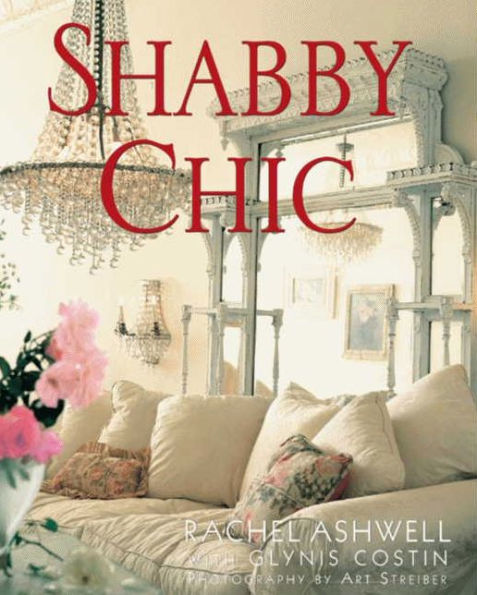

Paperback(Reprint)
-
SHIP THIS ITEMTemporarily Out of Stock Online
-
PICK UP IN STORECheck Availability at Nearby Stores
Available within 2 business hours
Related collections and offers
Overview

Product Details
| ISBN-13: | 9780062007315 |
|---|---|
| Publisher: | HarperCollins |
| Publication date: | 03/29/2011 |
| Edition description: | Reprint |
| Pages: | 208 |
| Product dimensions: | 7.90(w) x 9.90(h) x 0.70(d) |
About the Author
Amy NeuNsinger is a photographer whose work has appeared in numerous magazines and advertising campaigns ranging from beauty to travel.
Read an Excerpt
Comfort, the beauty of imperfection, the allure of time-worn objects, and the appeal of simple, practical living: These are the cornerstones of what has come to be known as the Shabby Chic style. Shabby Chic, the home furnishings label and retail chain I founded in 1989, is now recognized not only as a brand name, but as a decorating style. Though some may find the phrase "shabby chic"--the idea that something "shabby" (faded and dilapidated) can be considered "chic" (elegant and stylish)--paradoxical, the two elements go hand in hand. Shabbiness, in its shunning of what is too new, modern, or ostentatious, as well as in its rebellion against perfection, is precisely what makes this comfortable look so alluring. The cozy familiarity of a well-worn, beloved pair of faded blue jeans--versus the starched stiffness of a new pair--is the appeal of Shabby Chic.
I didn't invent this relaxed style. Europeans have long appreciated this approach to living: Witness the dilapidated elegance of an Italian villa, French castle, or English country estate whose owners can easily afford new furnishings, but prefer the worn grandeur of faded velvets and peeling vanities handed down from their ancestors. Shabby Chic represents a revived appreciation for what is useful, well loved, and comfortable, for those things that some might perceive as being too tattered and worn to be of use or value.
Collecting important, rare, or costly objects meant to be seen and not touched is not part of the Shabby Chic philosophy. My philosophy of decor is that nothing should be too precious. A child should feel free to put her feet on the sofa, a guest, his cup on the coffeetable. I believe in cozy, not fussy; relaxed, not stiff. I believe in living in, on, and around one's things, not merely with them.
A roomy, slipcovered chair big enough for a child and a dog or two, with slightly wrinkled, worn fabric and ample arms perfect for plopping your legs over; an old trunk, its paint peeling around the edges, given new life as a coffee table; a vase of roses from the garden, a bit wilted, a few petals missing; a vintage mirror, framed with a white floral iron piece salvaged from an old gate and chipped in places, but still charming; a slightly rusted flea market chandelier; a scratched-up coal scuttle used as a bread box; an array of vanilla-scented candles adding a warm glow to a cozy room--these are some of the elements of the effortless, inviting look I prefer. Colors in keeping with this way of living tend to be soft, palatable tones such as seafoam, mint, and celadon greens; dusty roses; pale sky blues; and ivories, creams, and grays that appear to be muted by age, or crisp, clean whites that blend with everything. Brighter or darker colors can occasionally be a part of the look if they are treated with subtlety, combined with white or light colors, or if they appear to be faded by time.
But Shabby Chic goes far beyond the stereotype of a few tea-stained florals and some cushy chairs. Some have called this shabby yet elegant look "a marriage between the laid-back, breezy ease of Los Angeles beach life and the romantic prettiness of English country life at its most casual." Others have described it as having "the aura of old money, cushy comfort, and crafted indifference" or as "the merging of a romantic, old-fashioned, aesthetic appeal with modern functions." To these qualities, I would add that the style suggests things that are inherited rather than store-bought and handcrafted rather than mass-produced. It is also a style that is appreciative of the beauty of process and evolution.



